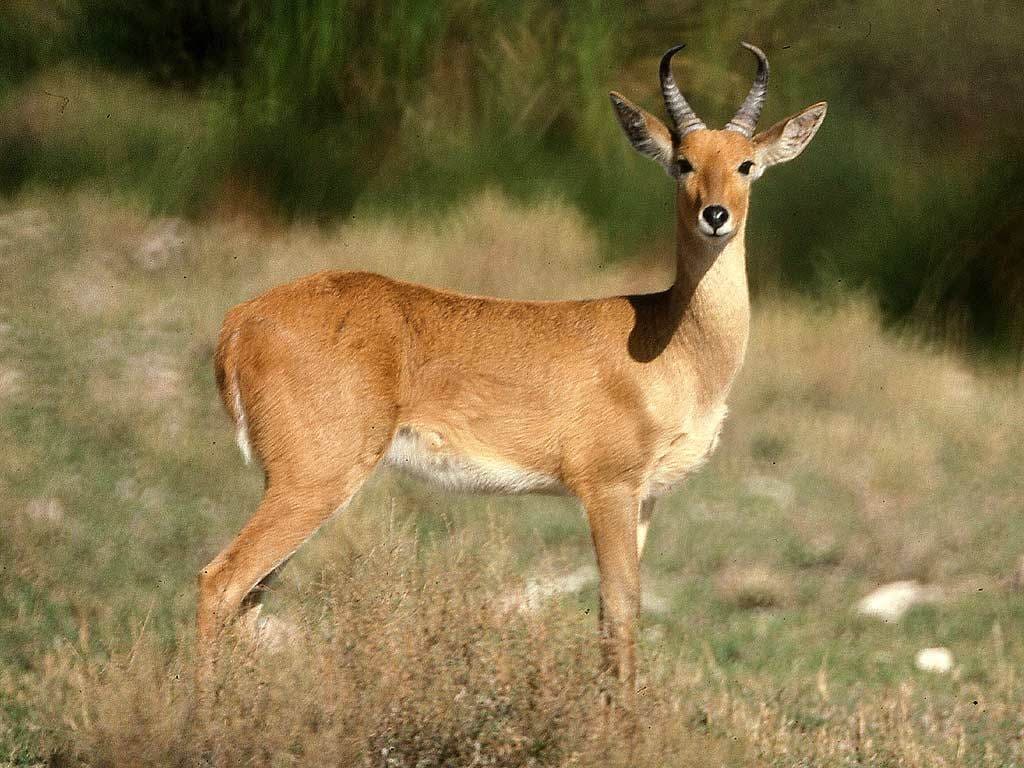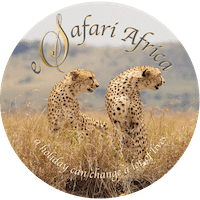Spanning a colossal area of nearly 50,000 square kilometers, Nyerere National Park exceeds the size of Switzerland. The park, formerly known as Selous Game Reserve, stands as a global giant in wildlife preservation. Declared a UNESCO World Heritage Site in 1982, this haven for nature remains untouched by mass tourism, welcoming less than 5,000 visitors annually. This translates to a unique wilderness experience for those fortunate enough to explore its untamed beauty.
Commitment to Conservation
Constituting a remarkable 5% of Tanzania’s landmass, the vast expanse of Nyerere National Park offers a unique contrast. While the reserve itself shows an impressive area, tourist accommodation is restricted to a select few high-quality, low-impact lodges, ensuring responsible interaction with the environment. This commitment to conservation extends to the exceptional guiding standards within the reserve. Visitors can experience thrilling walk- and boat safaris, with the option of unforgettable overnight fly-camping adventures, granting them a truly diverse perspective on the vibrant life of this southern eden.
A paradise for photography
Focusing on a limited northern section, photographic tourism thrives within the reserve. This area provides a photographer’s paradise, with waterways and plains reflecting the ever-changing colours of the sun and attracting a kaleidoscope of water birds and raptors (birds of prey). North of the Rufiji River, the tourist sector stretches westward to Stiegler’s Gorge and reaches the TAZARA railway in the north. Showing a diverse range of vegetation types, the diversity of the mighty Rufiji River, open woodlands, sprawling plains, and dense thicket forests creates a spectacular ecological mosaic. This rich mosaic spans over several days, best explored through a combination of thrilling game drives, relaxing boat trips, and exciting walks.
The History of Nyerere National Park
Nyerere National Park boasts a fascinating past, integrated with exploration, conservation, and even a touch of controversy.
Early Traces and Trade Routes
Long before documented history, unknown people left their mark on the land, now part of the reserve, with stone tools and bowls. Later, the northern village of Kisaki flourished as a key junction for trade routes connecting to Kilwa, a center for ivory and slave trade. However, by the mid-19th century, explorers reported the area as sparsely populated.
The Legacy of Frederick Courtney Selous
In 1922, the reserve was named after Captain Frederick Courtney Selous, a legendary English explorer. Inspired by the writings of Livingstone, Selous arrived in South Africa in 1871 and crafted a remarkable path as a hunter, tracker, and conservation advocate. He earned the respect of King Lobengula in Matabeleland and became famous for his skills and knowledge of nature. Selous’ bestselling accounts and guiding safaris, including one for Theodore Roosevelt, cemented his fame as the “greatest of the white hunters.” Despite retiring in England, Selous felt compelled to contribute to World War I. He tragically died in action at the age of 64 while pursuing German forces in Tanzania.
Constantine Ionides and the Fight Against Poaching
Following Selous’ legacy, Constantine Ionides emerged as another prominent figure. This hunter, with a strong conservation ethic, played a crucial role in the 1990s, collaborating with Tanzanian authorities to counter elephant hunting.
Balancing Conservation and Challenges
Nyerere National Park confronts a complex reality. Currently, the reserve is divided between photographic tourism and a hunting zone. The income generated by hunting helps to fund anti-hunting efforts, a vital activity for the reserve’s overall conservation. However, the practice of trophy hunting remains a point of debate. Efforts are underway to expand the area dedicated to photographic tourism, reflecting a commitment to minimize human impact and prioritize sustainable wildlife viewing.
The rich history of Nyerere National Park serves as a reminder of the ongoing struggle to balance conservation efforts with economic realities. It’s a story of exploration, dedication, and the continuous efforts of protecting this remarkable natural treasure.
The Landscape of Nyerere National Park
The park boasts a stunning and varied landscape, offering a unique safari experience. Lush forests and woodlands intertwine with the lagoons, sandbanks, and vastness of the Rufiji River. This creates a diverse habitat for a spectacular array of wildlife. The reserve’s southern location attracts a unique blend of resident and migratory animals from both East and Southern Africa. Notably, over 440 bird species add a symphony of color and sound to the environment.
A Landscape of Contrasts
- Verdant Oasis: Unusually green grasses and dense vegetation characterize the landscape.
- Whispers of the Past: Huge Borassus Palms, reaching up to 25 meters, line the riverbanks. When the river changes course, these giants become victims of thirst, leaving behind “headless totems” as haunting reminders of the past.
- Skeletal Sentinels: Leadwood trees, standing tall even after reaching their two-millennia lifespan, create a stark contrast. These skeletal silhouettes offer a photogenic perch for songbirds and raptors.
Diverse Explorations in Nyerere National Park
- Eastern Woodlands: The eastern area, with Selous Safari Camp, Rufiji River Camp, and Mbuyu Camp, offers grassy woodlands. Here, Terminalia trees and fragrant African mahogany provide shade for walking safaris.
- Northern Miombo: Traveling north and west towards the Beho Beho Mountains, the landscape changes into low miombo woodland.
- Western Wilderness: The least developed region lies in the west, currently home only to Sand Rivers Selous camp. This scenic area, now known as Stiegler’s Gorge, offers breathtaking views across the woodlands and plains. The name honours an unfortunate Swiss explorer who died here in the early 20th century.
A Wildlife Spectacle Awaits on the Rufiji River
The intricate waterways of the ever-shifting Rufiji River Delta form a haven for wildlife. A Feast for the Eyes!
- Thriving Giants: Large elephant populations come to drink water here. Meanwhile grunting hippos and lurking crocodiles that vanish into the water at the slightest sound.
- Seasonal Drama: As the rains come and go, herds of game animals spread and regroup around shrinking water sources. Facing potential predators, this creates dramatic scenes.
- A Symphony of Birdsongs: The sandbanks, lagoons, and river channels teem with a spectacular array of birdlife. For instance colourful terns, long-legged storks, and pelicans create a comical feeding spectacle.
- Airborne Acrobats: Witness the swift elegance of African Skimmers and the territorial battles between the statuesque Goliath Heron and the broad-breasted African Fish Eagle.
- A Birder’s Paradise: Boat trips offer sightings of at least eight kingfisher species, while the woodlands boast a remarkable nine bee-eater varieties. Look for the Bohm’s and Swallow-tailed bee-eaters, and during peak summer, spot the vibrant carmine bee-eater. Moreover, keep your eyes open for Pel’s fishing owl, a hunter flitting through the evening shadows.
Land Mammals Galore
- Grazers and Browsers: Encounter resident wildebeest species (black-bearded gnu and Nyasa wildebeest) or, in addition, grumpy buffalo herds.
- Antelope Gems: With a stroke of luck, you might glimpse the graceful sable antelope, especially around Matambwe and Stiegler’s Gorge. Furthermore the majestic greater kudu, with its impressive spiral horns, might also make an appearance.
Nyerere Specialties: The reserve is home to large herds of eland, the largest antelope. Besides that, the eland of Nyerere boasts the longest horns in East Africa. These surprisingly agile giants are a common sight. Look out for the Eastern Bohor reedbuck, smaller than an impala, and the unique Lichtenstein’s Hartebeest, found only in Nyerere National Park.

Discover the wildlife wonders during a safari in Nyerere National Park
Nyerere National Park offers a unique safari experience. Therefore a diverse range of wildlife is waiting to be discovered.
Spotting Specials:
While the dense woodlands and savannahs make sightings more challenging compared to open plains, Nyerere boasts an impressive variety of animals.
- Antelope Abundance: The reserve is a haven for antelope and wildebeest, with a healthy population of these graceful grazers.
- Elephant Extravaganza: The park is famous for its large elephant population. Therefore you may expect frequent meetings with these magnificent giants.
Predatory Prowlers:
- Lions on the Landscape: Several lion prides call Nyerere their home. Indeed the thrill of hearing their roars at night or spotting their trails adds an exciting edge to your safari adventure.
- The Elusive Leopard: The leopard’s shy nature makes them challenging to find. However, their presence is undeniable with signs like scratches and activity marks on trees. While sightings of leopards are less frequent, you might just arrive at your camp right after you crossed one.
Rare Encounters:
- Cheetah Chance: While sightings are uncommon, the park has a small cheetah population, offering a potential glimpse of these elegant predators.
- Thriving Wild Dogs: Nyerere provides a safe haven for African wild dogs, a rare and protected species in Africa. Here, they face less competition from hyenas compared to other regions in Tanzania.
Grazers Galore:
- Towering Giraffes: Keep an eye out for giraffes stretching their long necks above the bushes, often surprised into a graceful, slow-motion “flight.”
- Zebra Dazzling: Witness the impressive sight of zebras streaking across the sunny savannas, their stripes a mesmerizing contrast against the golden landscape.
More information about Nyerere National Park you can find here.
Book a safari to Nyerere and/or National Park!
Are you ready to experience an unforgettable safari adventure in Nyerere National Park?
eSafari Africa is your one-stop shop for crafting the perfect Tanzanian safari experience. We are specialised in personalized itineraries that cater to your interests and travel style.
Explore our website:
- Discover our curated Northern and Southern Tanzania tours, featuring a variety of exciting destinations.
- Get in touch with our expert team to discuss customising your dream safari in Nyerere National Park.
Let eSafari Africa guide you on an unforgettable journey through wild Tanzania!

